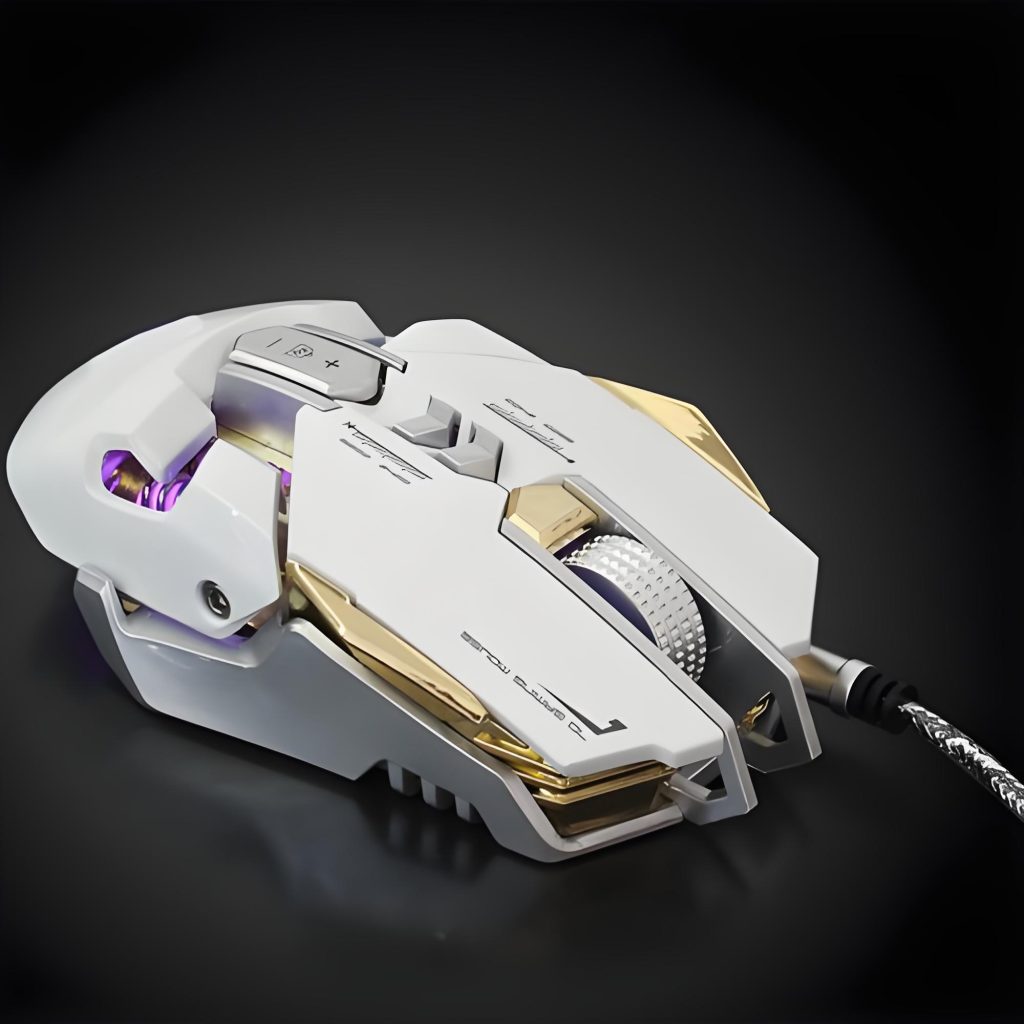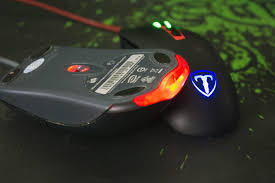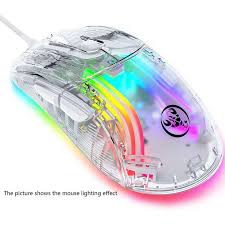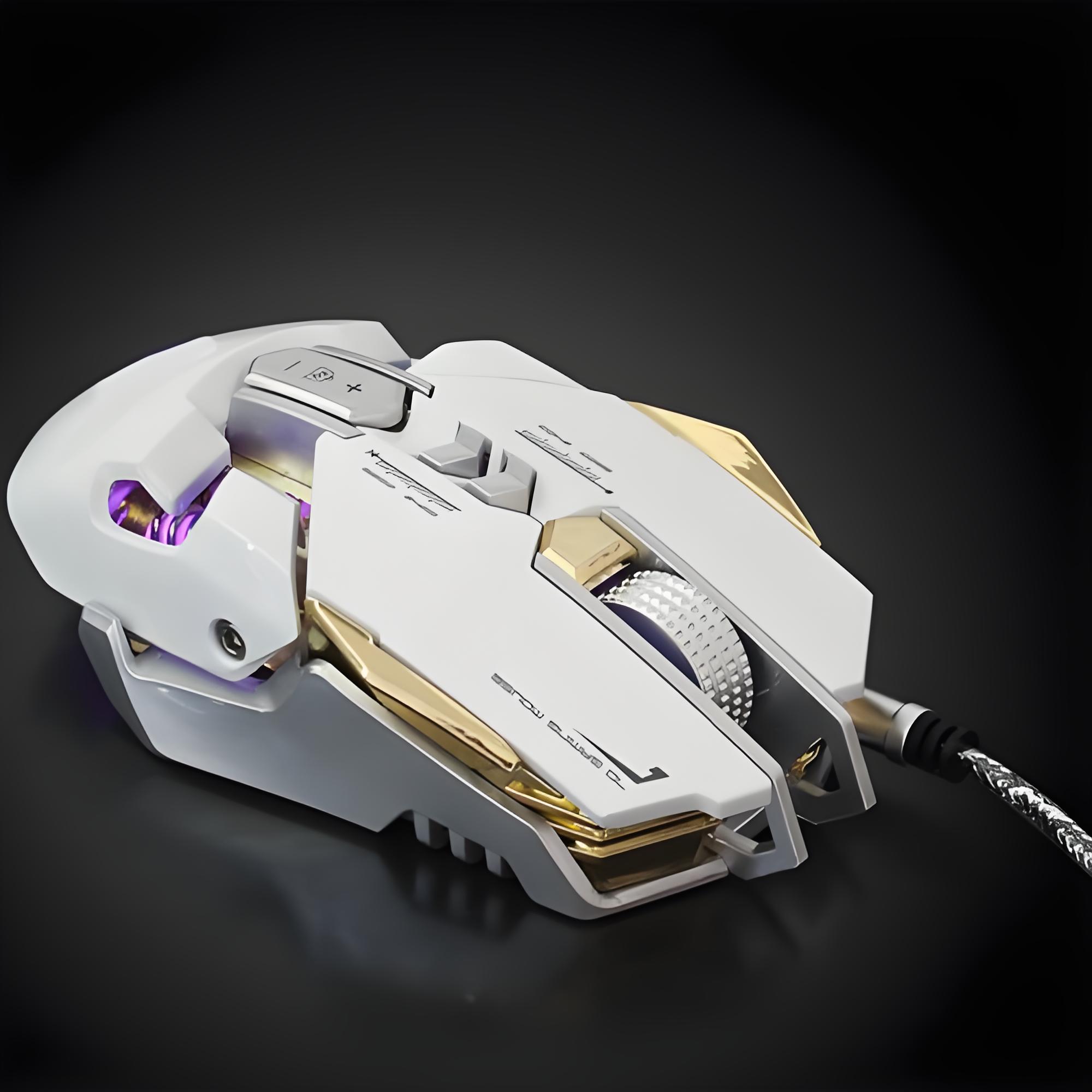Your cart is currently empty!
There was an classical and funny question known by billions of people——Which came first, the Chicken or the Egg? And there are also a similar question raised by gamers——Which came first, the Computer or the Mouse? Actually, the mouse appeared 18 years after the invention of the computer and undoubtedly, it also has a long history. In this moment, I would like to share the story of the gaming mouse’s history with you and invite you to imagine its future development together.
Game mouse development history
As an important part of game peripherals, the development of game mouse has gone through several key stages. From the original mechanical mouse to the modern laser and optical mouse, advances in technology continue to drive performance improvements and user experience improvements in gaming mice.
1. The era of the mechanical mouse

Early mice used mechanical ball rolling technology to detect the user’s movement by rolling the ball across the desktop. This kind of mouse has limited accuracy and response speed, which is easy to accumulate dust and affect the use. Nevertheless, the mechanical mouse laid the foundation for later optical and laser mice.
2. The appearance of the optical mouse

In the late 1990s, optical mice began to replace mechanical mice. Optical mice utilize LED light sources and sensors to detect surface movement, greatly improving the accuracy and durability of the mouse. The optical mouse eliminates the need for ball bearings, avoids mechanical wear and ash accumulation, and provides a smoother operating experience.
3. Rise of the laser mouse

In 2004, the laser mouse came into market. Compared to optical mice, laser mice use laser light as a light source, providing greater accuracy and sensitivity. The laser mouse can be used on more types of surfaces and is especially suitable for gamers who need high precision. However, due to the high sensitivity of the laser, excessive sensitivity may occur on some surfaces.
4. High and adjustable DPI technologies
With the diversification and complexity of the game, the player’s demand for mouse accuracy is getting higher and higher. Manufacturers began to introduce mice that supported high DPI (dots per inch) and introduced adjustable DPI technology, allowing players to adjust the sensitivity of the mouse at any time according to different gaming needs. This technology greatly enhances the adaptability and flexibility of the gaming mouse.
5. Advances in wireless technology
The appearance of wireless gaming mouse solves the problem of cable bondage during the use of wired mouse. Early wireless mice had problems with latency and battery life, but as the technology has evolved, modern wireless mice are almost comparable to wired mice in terms of response speed and battery life. Advanced wireless technologies such as Logitech’s Lightspeed and Razer’s HyperSpeed have made wireless mice the first choice for many professional gamers.
6. Ergonomic design and RGB lighting effect

Modern gaming mice are increasingly focused on ergonomic design to reduce fatigue and discomfort caused by prolonged use. Depending on the hand type and the way it is held (such as grip, belly grip and finger grip), manufacturers offer a variety of designs to meet the needs of different users. In addition, RGB light effect has become the standard configuration of gaming mice, providing rich visual effects and personalized customization options.
Future development trend of gaming mouse
1. Higher accuracy and sensitivity
Future gaming mice will continue to strive for greater precision and sensitivity. With the development of new sensor technology, the DPI of the it will be further improved, and the response speed and tracking accuracy will be enhanced. This is especially important for genres that require high-precision manipulation, such as shooters and RTS games.
2. Artificial Intelligence and adaptive technology
Artificial intelligence and machine learning technologies are expected to be introduced into the gaming mouse. Through AI algorithms, the mouse can automatically adjust DPI, key mapping, and other Settings according to the user’s usage habits, thus providing a personalized operating experience. This adaptive technology will greatly simplify the mouse setup process and improve the efficiency of use.
3. Further development of wireless technology

Wireless technology will continue to improve, and future wireless gaming mice will further improve in terms of battery life, response speed and stability. At the same time, the popularity of wireless charging technology will make the use of wireless mice more convenient, and players do not need to frequently replace the battery or plug and unplug the charging cable.
4. Modular design
Modular design will become a major trend of the future game mouse. With the replaceable module, users can customize the button layout, weight and shape of the mouse according to their needs. This flexible design will meet the needs of different game types and personal preferences, providing a better user experience.
5. Environmental protection and sustainable development

With the increasing awareness of environmental protection, future gaming mice will pay more attention to environmental protection and sustainable development. Manufacturers will use environmentally friendly materials and recyclable designs to reduce their environmental impact.
6. Cross-platform and multi-device compatibility
Future gaming mice will focus more on cross-platform and multi-device compatibility. It can be used not only on PC, but also compatible with a variety of platforms such as game consoles and mobile devices. Through wireless technology and Bluetooth connectivity, players can seamlessly switch between different devices, increasing the convenience and flexibility of gaming.
Conclusion
The development of the gaming mouse is full of technological innovation and continuous improvement of user experience. In the future, with the continuous emergence of new technologies, gaming mice will become more intelligent, efficient and personalized, providing players with a better gaming experience. Whether it’s high-precision sensors, adaptive AI technology, or environmentally friendly design concepts, the future of gaming mice is full of possibilities.

Leave a Reply